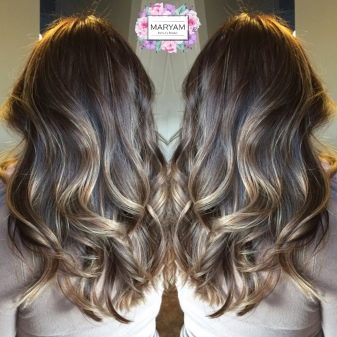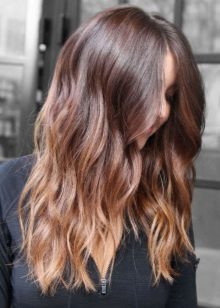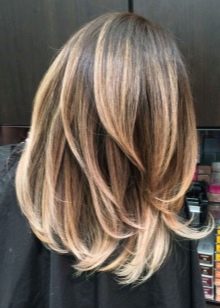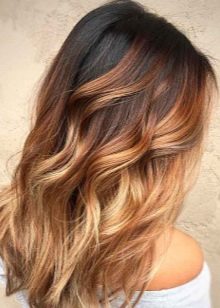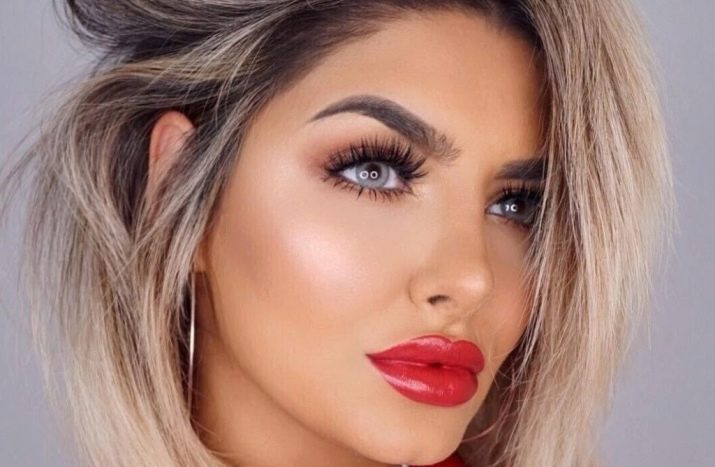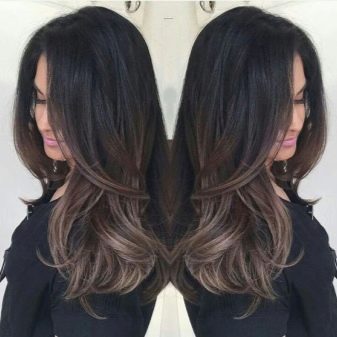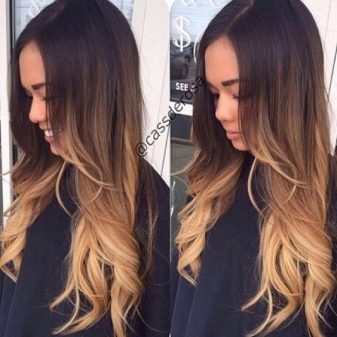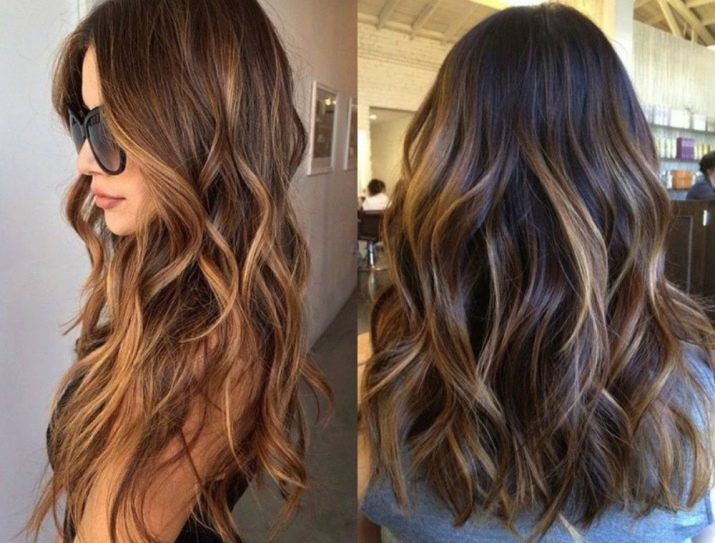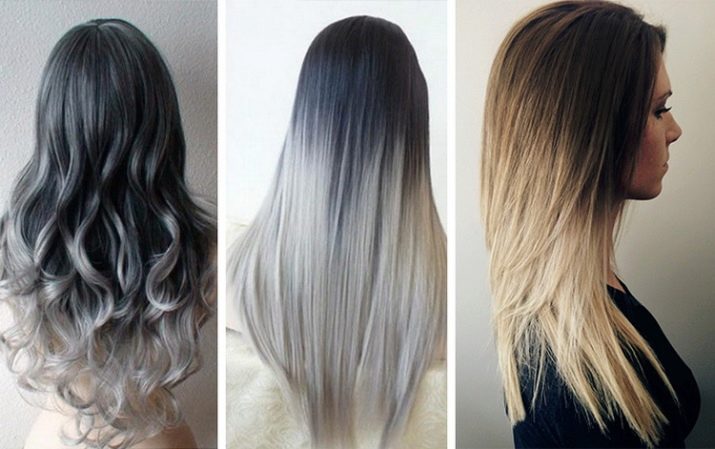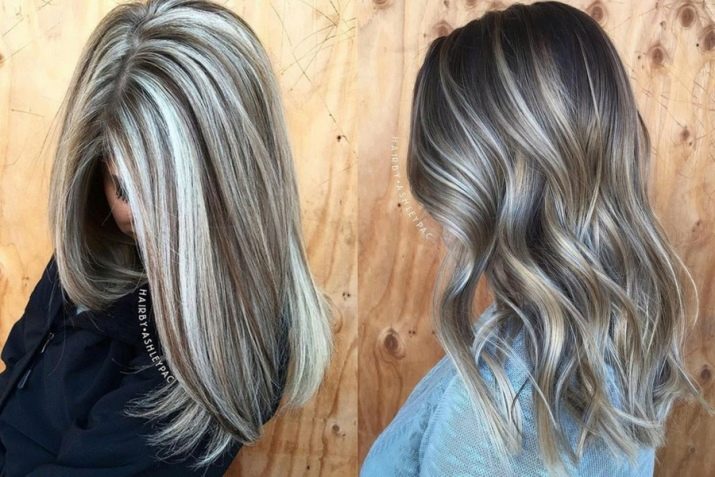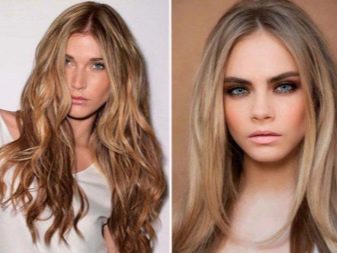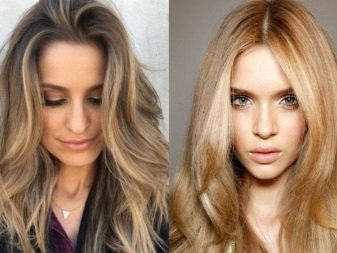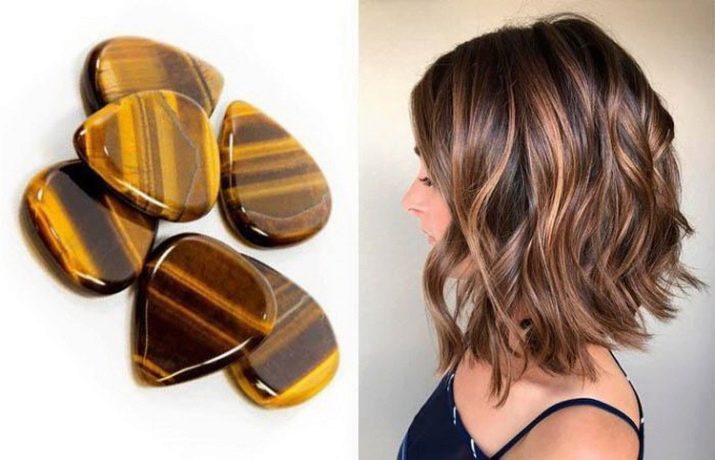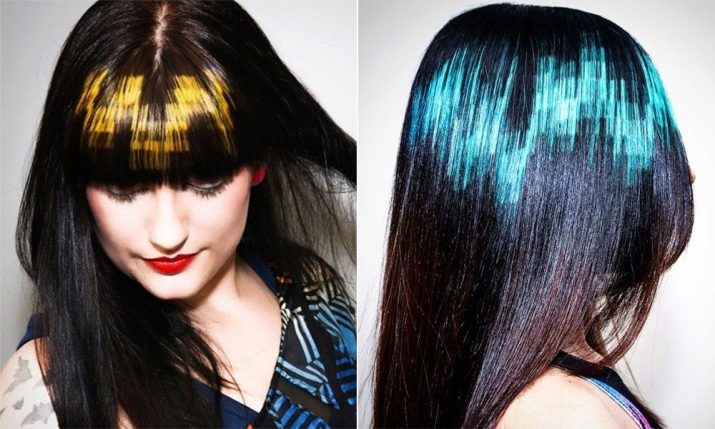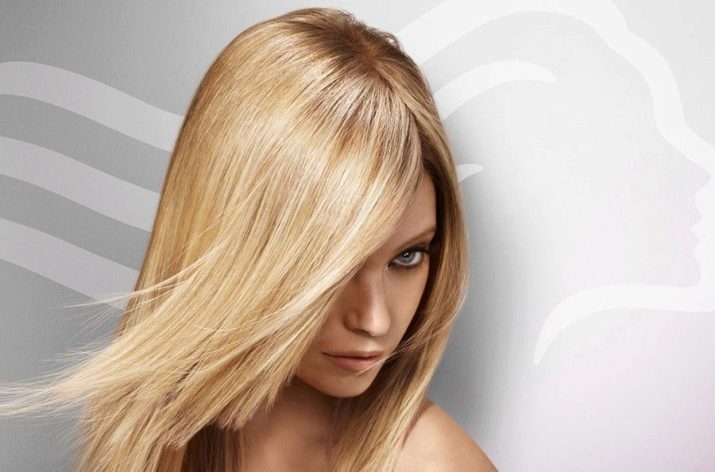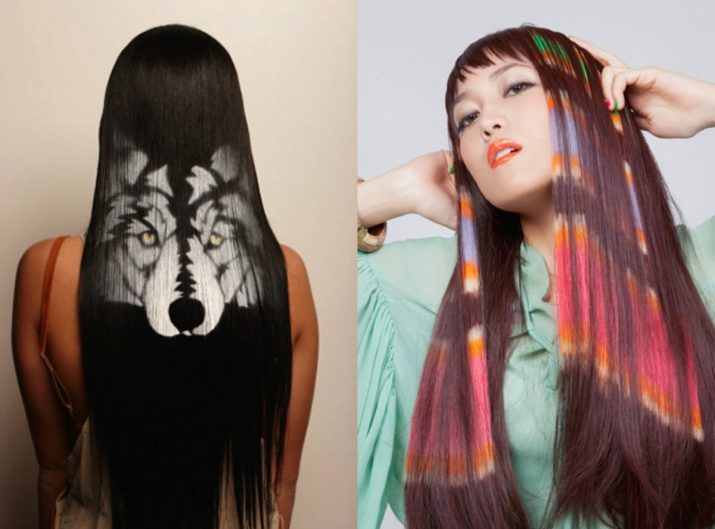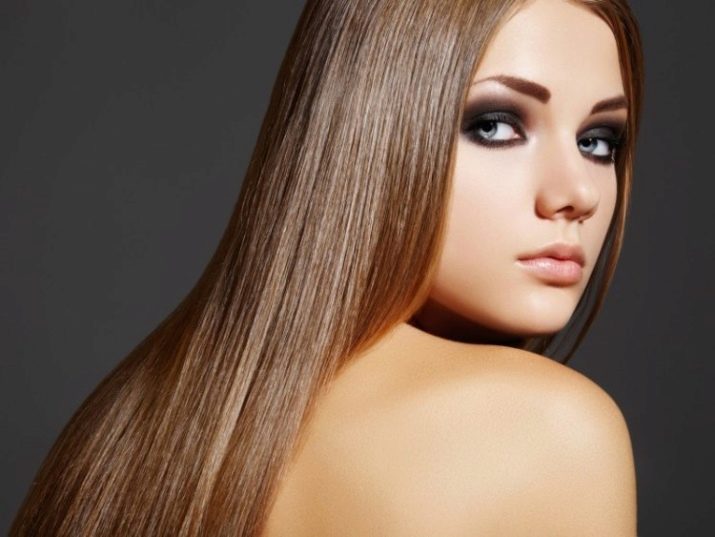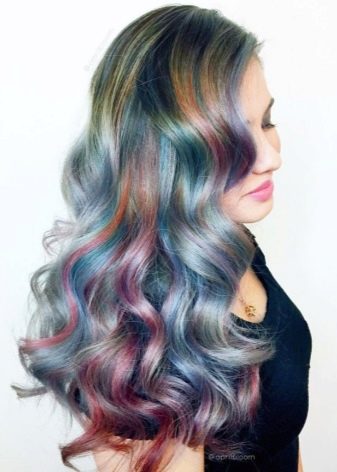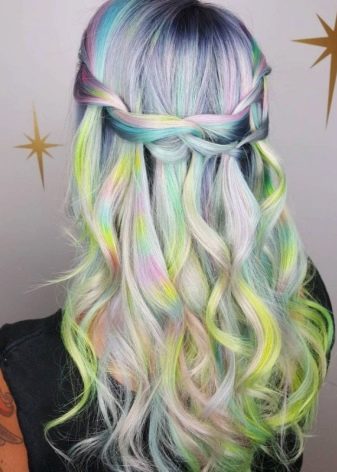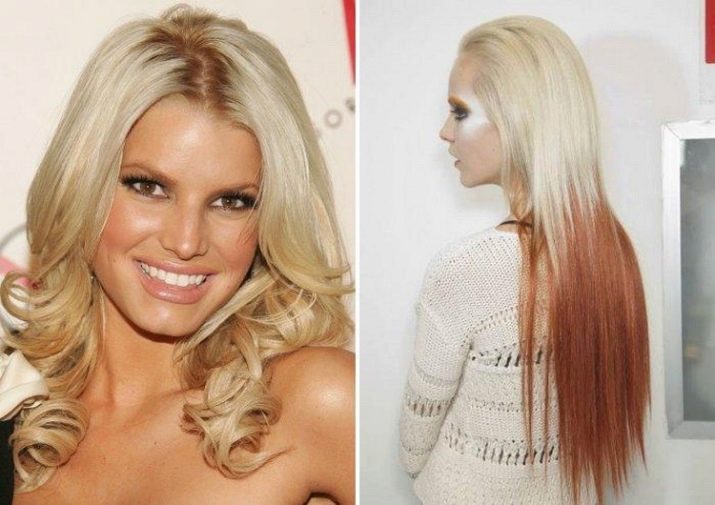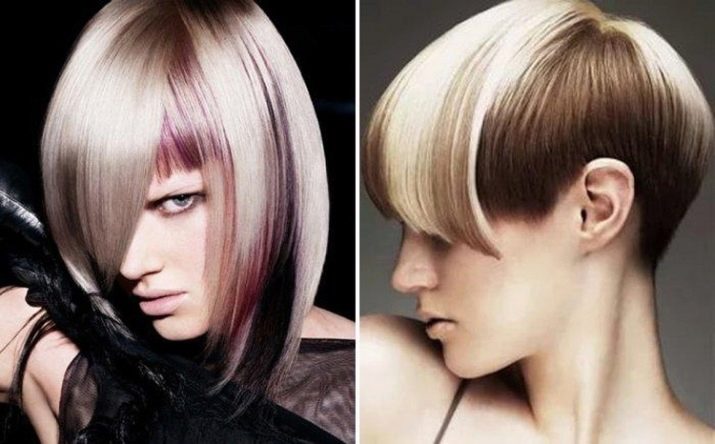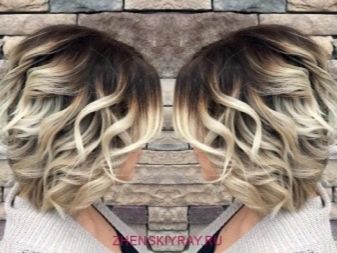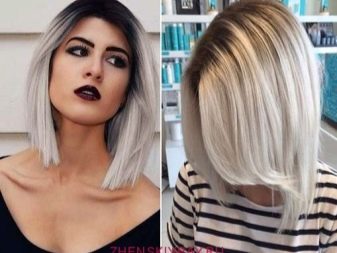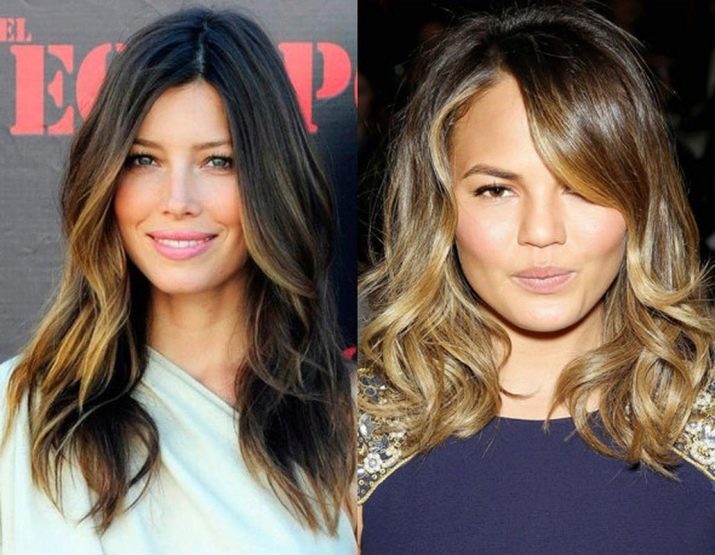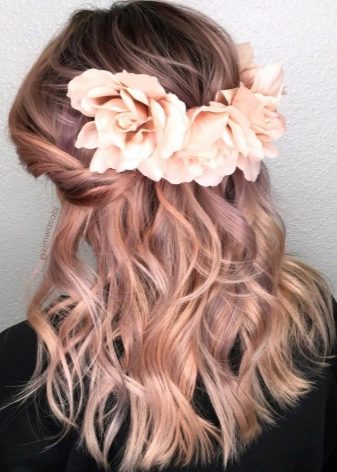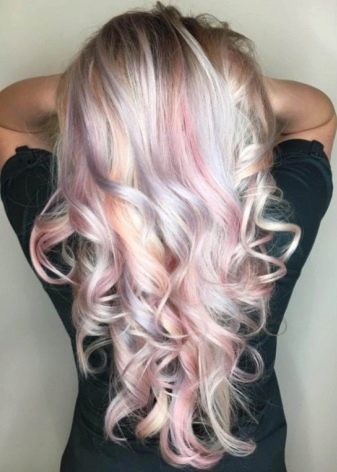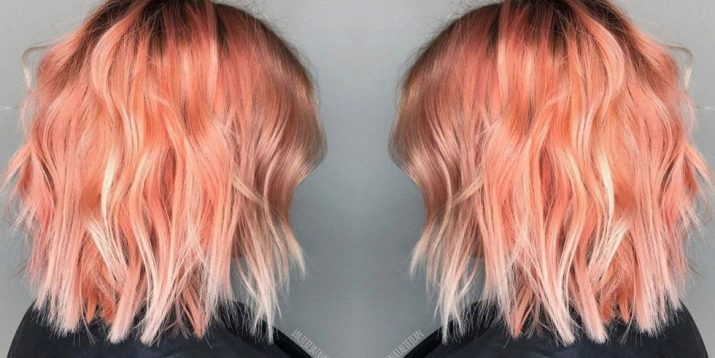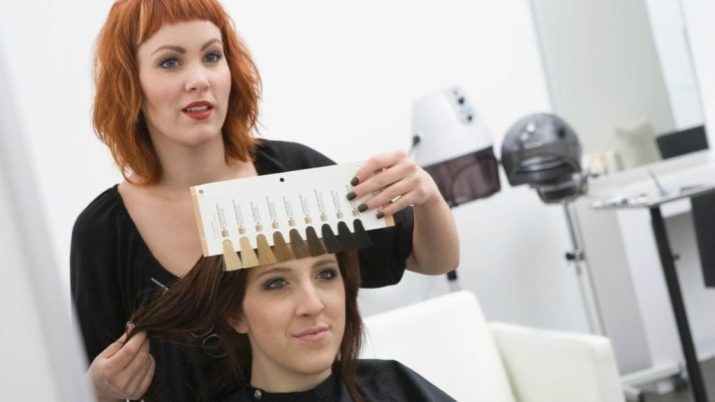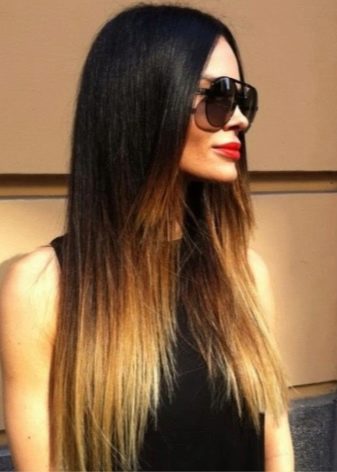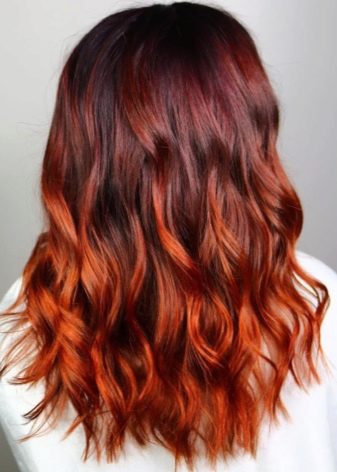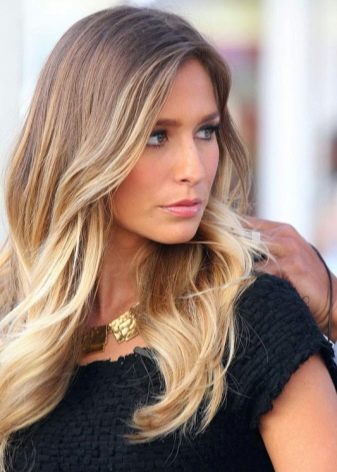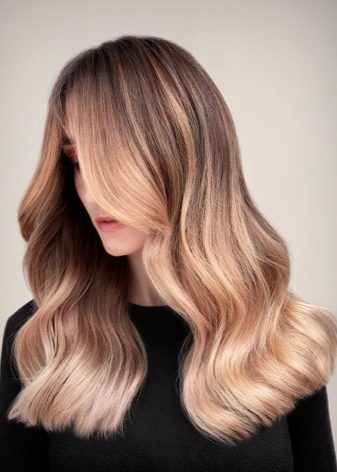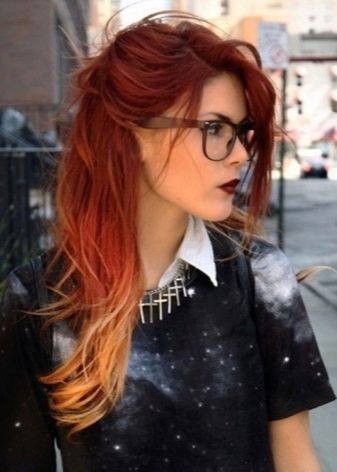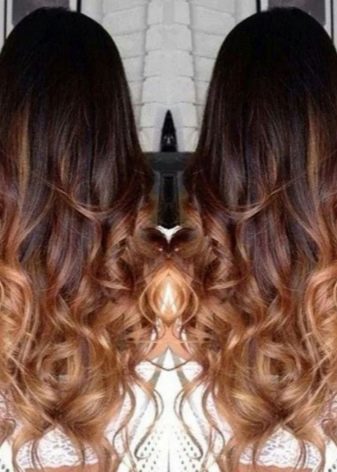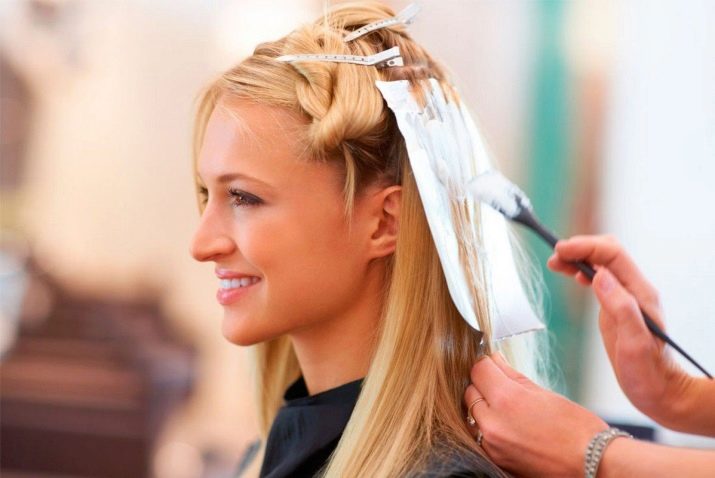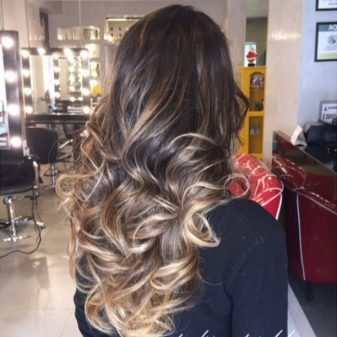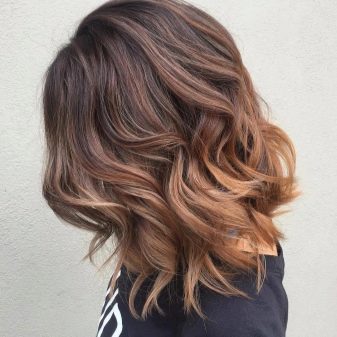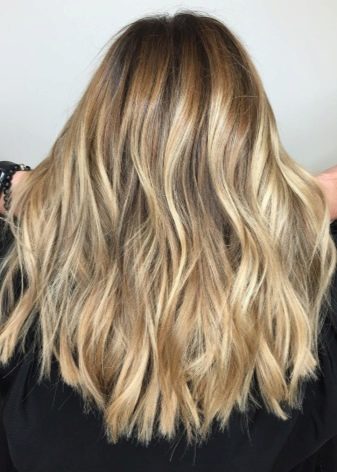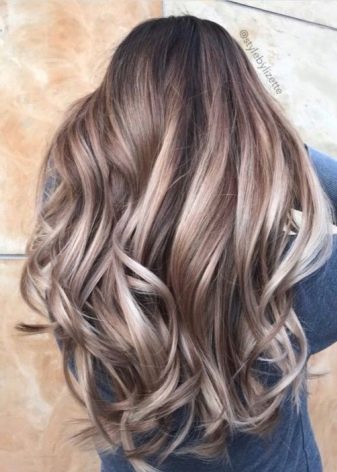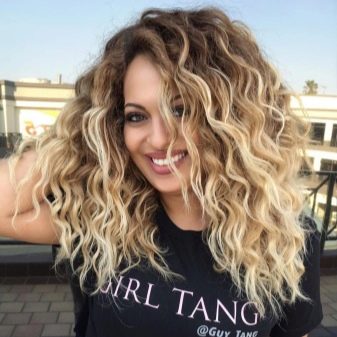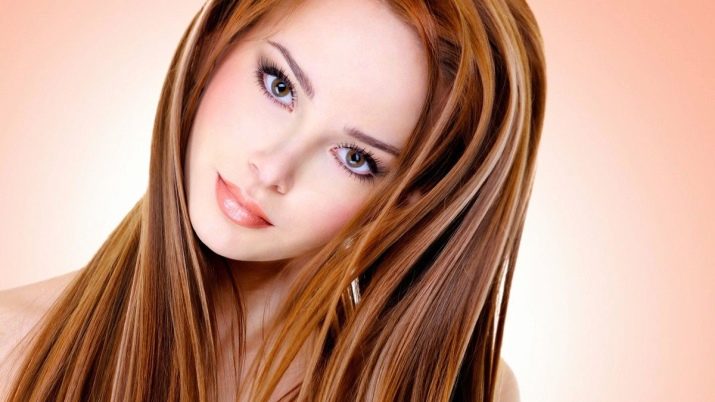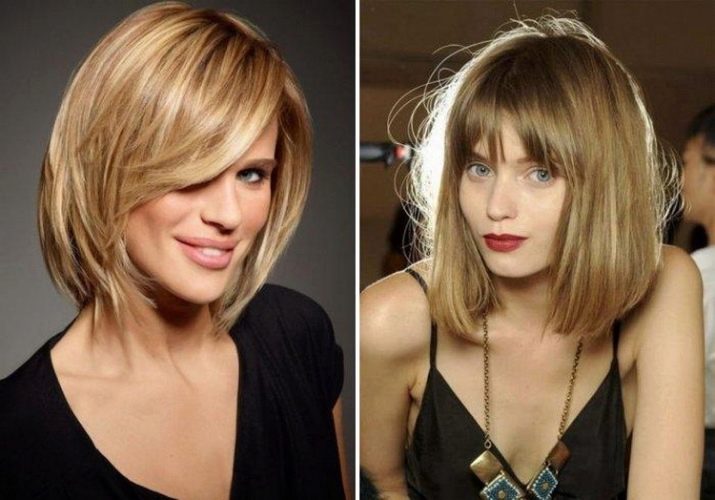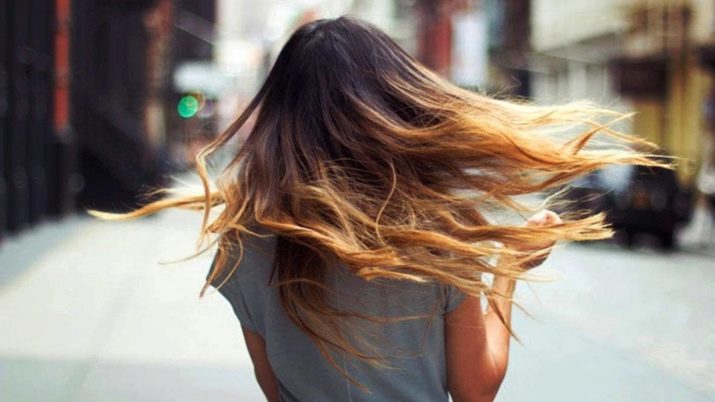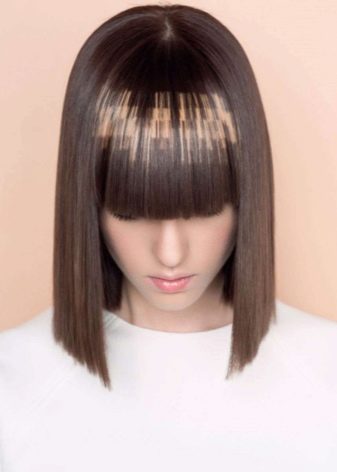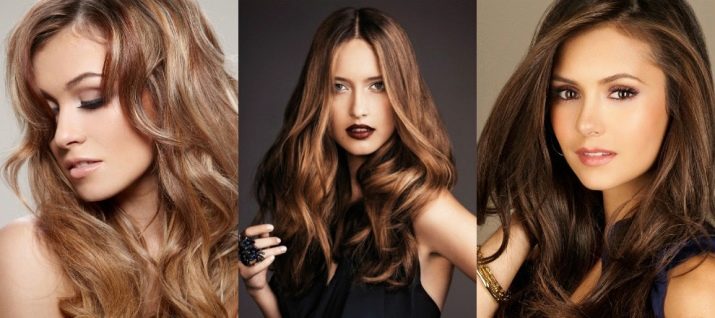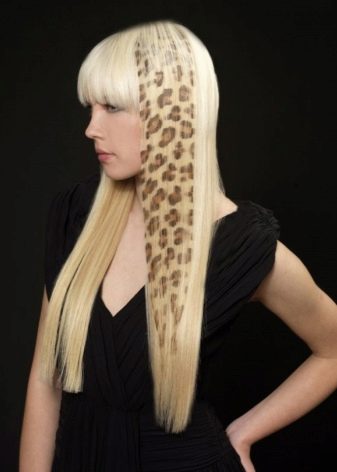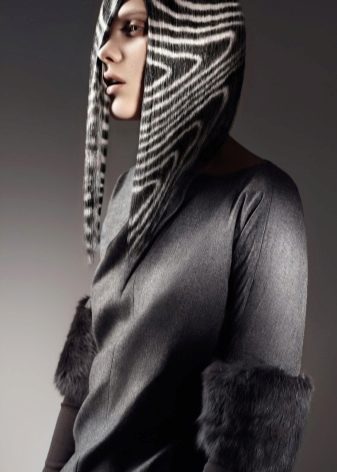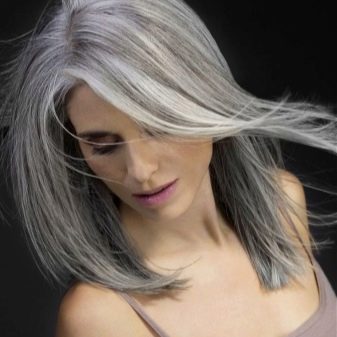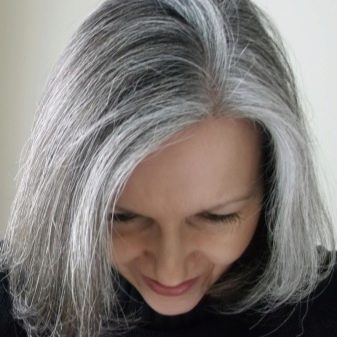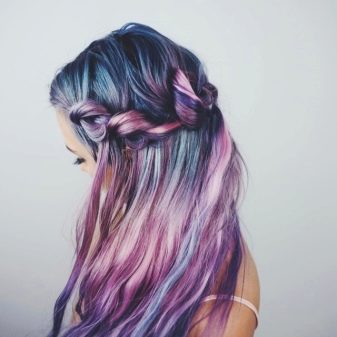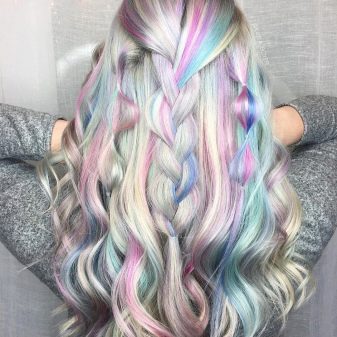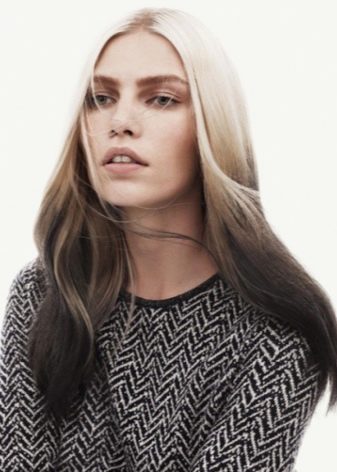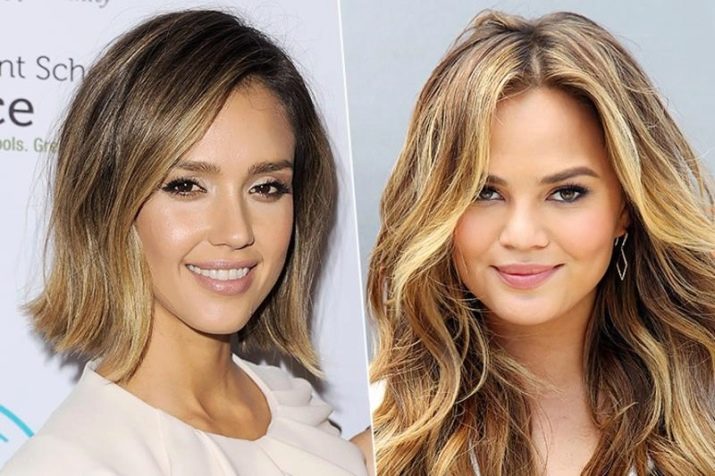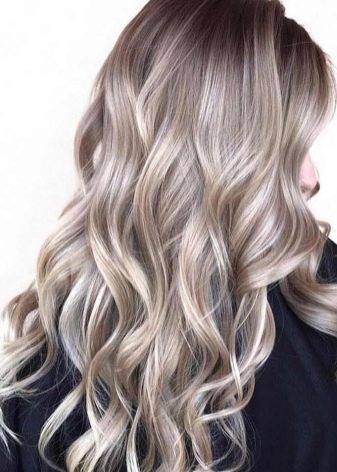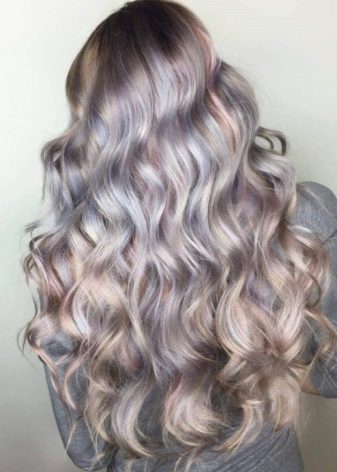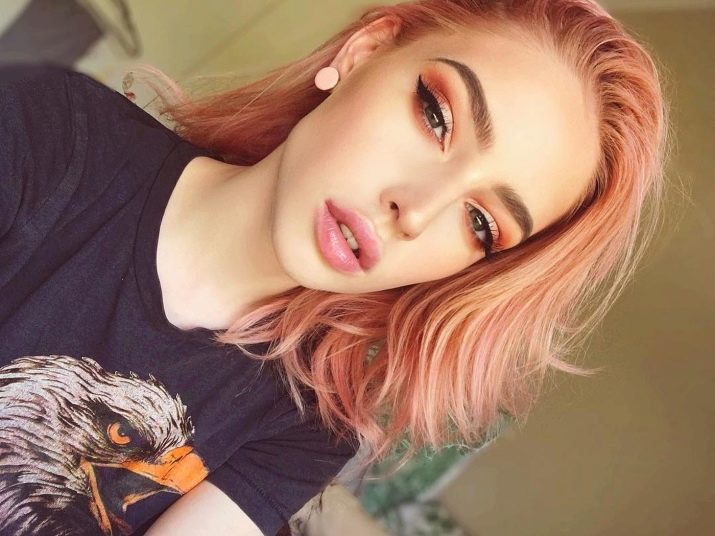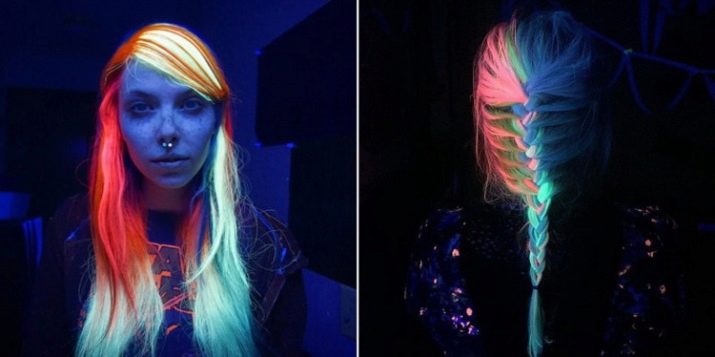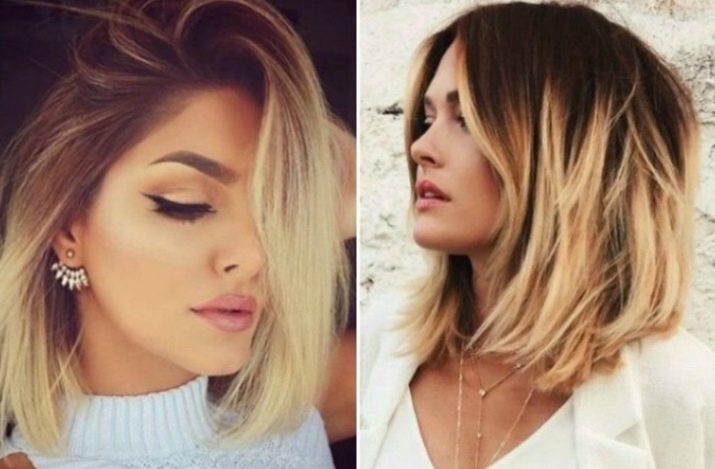Complicated hair coloring: what is it, techniques for different hair lengths

The art of professional coloring strands is constantly being improved. Monochrome technology today gave way to complex staining techniques. This is consistent with the latest fashion trends, which declare multi-color methods of coloring strands, volume, bright, expressive accents in hairstyles. If earlier we were content with highlighting and coloring, today there are a lot of varieties of multi-color technology.
What it is?
The technology of complex hair dyeing should be entrusted only to a professional master. Paint painting in this technique can only be highly skilled. The procedure is not always done with a single salon visit, it often takes several to achieve the desired result. Multi-color staining make:
- those who want to preserve the natural look of the strands, creating an easy illusion of a natural color transition;
- dreaming of causing extraordinary images, the most vivid and catchy.
Coloring in such techniques is to apply a different number of both similar in scale and contrasting shades. The number of tones varies from 2-3 to several dozen.
Advantages and disadvantages
Like any hair treatment, multicolour dyeing has a number of significant advantages and disadvantages. The advantages include:
- the opportunity to express their individuality;
- creating a fashionable and spectacular image;
- the technique of combining shades, as a rule, leaves the roots intact, so their structure is preserved;
- visual volume of strands;
- highlights haircut;
- properly selected shades rejuvenate the face, hide flaws;
- masking gray hair;
- suitable for all age categories;
- does not require frequent correction in comparison with monochrome painting;
- looks status;
- allows you to gradually change the color from light to dark and vice versa.
There are disadvantages:
- high price for quality materials and services of a professional master;
- Preliminary clarification is often required, which harms the strands.
- too dark and curly strands are poorly amenable to such techniques.
Kinds
There are a lot of names and schemes of coloring on a complex technology today. You can choose the best options for all types of strands, original color, face shape, age and status. Almost all multicolour staining, no matter what they are called, require stretching of color, transition, contrast or gradient. It is very important to know the main differences of techniques and choose the right tone, regardless of fashion trends. For example, the current ash is not every color type.
There are several basic staining techniques for complex type: shatush, balayazh, ombre, highlighting. On their basis, every season masters offer more and more original species.
Shatush
This look is distinguished by naturalness and airiness, the strands seem to be slightly brightened by the sun and look natural. The shades stretch harmoniously flowing from the darkened crown to the bright ends. A clear gradient can not be traced, the transition of the horizontal type.
To avoid this technique is recommended by redheads and those who have undergone lamination and keratin on the strands. Also not the best choice of shatush will be for light strands, short and gray.
Balayazh
One of the most popular techniques, washing out pigment from the strands, which are stained chaotically.The roots remain natural, the ends and a few strands above are painted contrastingly.
This technique keeps the effect on strands for a very long time, the transition is smooth and increasing volume. Great for curly hair, thin and straight. Looks best on the cascade and other multi-layered haircuts.
Ombre
The essence of this technique is in drawing out a natural color, a game with shades that look like a shadow. The roots remain in their original form or slightly darkened, then the gradient with a smooth transition goes along the entire length. Perfectly adds volume, magnificent both in assembled form, and uncool, suitable for straight and curly strands.
The ombre is distinguished from the velmbar by painting the ends superficially, and from the rod — not by selective lightening of the strands.
Highlighting
Best suited for those who want to make changes to the image, but not ready for dramatic changes. Separate strands are stained in this case, which allows the image to be fresh and interesting. Technologically, highlighting can be different: diagonal, basal, etc. The strands can be lightened or darkened.
Highlighting will perfectly hide gray hair, enliven the image, give volume, allow the roots to grow more inconspicuously, makes it possible to paint in any color, creating the impression of coloring.
Booking
It has become incredibly popular due to the fashion for naturalness. The transition eventually turns out so soft that we can barely see the shades used - as close as possible to each other. In fact, only light highlights on the strands are emphasized, nothing outrageous and catchy.
More shades are used here than in highlights, they look darkened at the roots, unlike the tips.
We present the popular fashion techniques based on different types of coloring, gradient staining and highlighting.
Eye of the Tiger. Used only warm gamma, suitable for dark-haired girls. Preferred shades of caramel, honey, amber, chocolate.
Pixel This is a creative technique, suitable for any length, but not performed on curls. The image in the form of pixels is quite complex, can be located both in the selected area, and along the entire length.
3D. One of the most complicated techniques, includes applying shades of opposite palettes in temperature: cold, warm, neutral. The strands are divided into 3 parts, each tinged in their own tone, adding light strands.
Stencil. Here everything is difficult and simple at the same time; when painting, a stencil is used, with which the pattern is applied to the strands. Suitable only for straight healthy hair.
Marble. To achieve this effect, uneven type clarification is performed. Not suitable for light strands.
- Pepper with salt. It looks best on dark hair, which has already touched the gray. In fact, it is a highlight that hides gray hair in order to effectively show off her.
- Holography. The name speaks for itself, in this technique, a mixture of blue, violet, green colors is used, after which they are applied to the straightened strands. Allowed to play with shades, if you are not so creative, in this case, you can pick up pastel colors. Look great in plaited.
- Point Scandinavia. Allows you to perform a smooth gradient from bright roots of a cool shade to darkened tips in warm colors. Very difficult and effective coloring.
- Squaw. Ideal for not too long and not too short strands. It is carried out with the help of a special cap, on which locks are placed on the back of the head and lightened. As a result - coloring on the contrast, the transition border is tinted in bright shades.
Blond Smokey This is a type of ombre that allows you not to correct staining for months. In this technique, the focus is on dark roots, which can be specifically darkened for greater effect. The transition shades noticeable, but very soft.
Contouring This trend is reminiscent of the selection of facial features with a special powder. Tones close to natural are applied with which the face is framed. A great way to emphasize the dignity of the face, adjust it with dark or light strands.
Pearls. Achieved by mixing different tones from gray to chocolate and applying on a platinum base. The effect of the iridescent pearl is very gentle, you can choose for any source color.
Bloranzh. Unusual coloring, which is suitable for brown-haired and light-skinned. It turns out by connection of shades of quiet orange, a rose and platinum.
Neon. This method is suitable for lovers of shocking, after it strands will glow in the dark and sparkle in different shades.
How to pick up?
Before choosing the type of staining, you should either consult with the master, or analyze the source data. First of all, proceed from the length of the strands: long, medium length to the shoulders, short. Then mark those methods that are not suitable for curly hair, if you have such. Direct - allow much more variations. Next, evaluate the original color, for brown-haired, red, chestnut, black, light strands fit certain shades.
It is important that the coloring favorably emphasizes the relief of the haircut, square, bob, pixie, with or without bangs. In any case, the basic shade should be close to the natural color, and the choice of other shades and the method of their arrangement should be entrusted to a specialist.
The most important point that needs to be repelled is the color type. First, determine which of them you are, then select the method of complex staining:
winter - cool type, but it suits very expressive shades (copper, gold, red and brown scales);
Spring - it is especially well emphasized with light tones (gold, beige, light-colored gamma, flax, caramel, light chestnut);
summer - It looks better in cold tones (light brown gamma, ash, pearl, cold brown);
autumn Perfect with a warm tones (reddish copper, fiery, brown and chestnut tones are ideal for selection).
Consider the following points:
- naturally dark strands will require significant lightening, it can harm them;
- blond hair can not be lightened very aggressively;
- consider your lifestyle and status, before choosing a painting type, you should not be painted in too light or bright shades if you occupy a serious position.
Beautiful examples
Dark natural strands - the perfect backdrop for the shatusha. The length of the hair is not important.
The chaotic balayage contrast is a great way to add volume to the strands and create the effect of luxurious negligence.
Naturally curly hair is not suitable for every type of complex dyeing. One of the ways to emphasize curls in an original way is to make an ombre.
Highlighting is not always monotonous, a good master can create a real miracle in this technique.
If the strands are short or medium and fair-haired, think over the brondirovaniya option. This technique is suitable for absolutely any age and status.
Darkened roots and elegantly flowing shades of warm honey, wheat, light reddish are the perfect solution for long strands.
For the bold and expressive fit bright pixel coloring. Shades must be selected under the original color strands, so that the contrast was the most spectacular.
Painting in 3D technique gives an amazing result of the elusive transition of tones from one to another. At the same time, the volume visually increases, and the shine of the strands is simply fantastic.
Stencil painting is not suitable for a measured lifestyle, but it will perfectly emphasize the creative nature and courage of the owner.
If the gray hair is uneven, but you do not want to change the image, there is a desire to grow old naturally, the “pepper and salt” technique will do.
The holographic effect is a great way for self-expression for young ladies. In weaving, it looks especially amazing.
The coloring of the “Scandinavian point” reversed the concept of techniques and technology of coloring. Light roots, dark ends, a mixture of warm and cool tones - all this is not only permissible, but also looks very harmonious.
Refreshing the image, give the features clarity and completeness, to hide the flaws will help contouring staining.
Pearl coloring technique gives the impression of a radiant, iridescent nacre. The color scheme can be quite neutral or very original.
Bloranzh gives you the opportunity to create a peach extravaganza with hints of citrus, red, and subdued pink hues In this case, the composition does not look flashy.
The clubbers will definitely like the idea of shining with different shades during the party.
Last season's hit - Smokey Blond. Expressive and bright blonde who does not need frequent visits to the hairdresser - a great option for an active modern woman.
How to make a complex coloring, see the next video.

